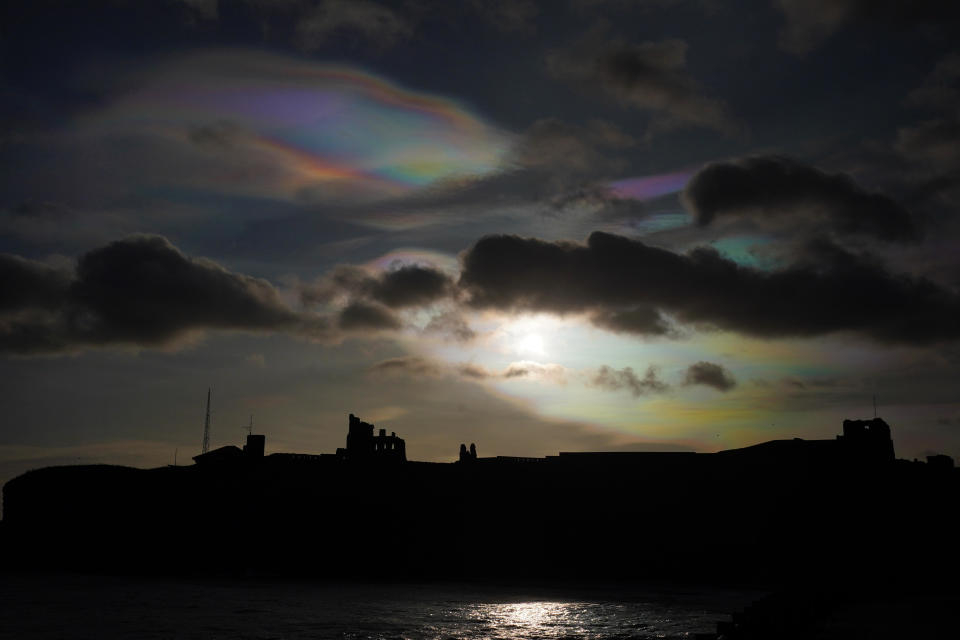Rare rainbow clouds form over Ireland and England
The skies above Dublin, Ireland, and northeast England became a spectacular site of "utterly transfixing" iridescent lights Thursday morning. Rare "rainbow clouds" formed in the early morning, creating waves of yellows, pinks and blues above homes.
Locals took videos of the clouds, which give the sky an almost oil slick-like sheen. According to NOAA, the phenomenon is "relatively rare" and only happens when a cloud is thin and full of water droplets or ice crystals.

"I was lucky enough to spend time with some very rare nacreous clouds this morning appearing & evanescing near Swords, north county Dublin," said one person who posted a video of the clouds on social media. "Utterly transfixing & mesmerising."
What causes a rainbow cloud to form?
These colorful clouds, also known as nacreous clouds, tend to form over polar regions in the lower stratosphere between 68,500 and 100,000 feet in the air, the U.K.'s Met Office says. They occur when the sun is just below the horizon and illuminates the clouds from below.
Rainbow clouds are filled with ice particles that the Met Office says are "much smaller than those that form more common clouds," and when the light hits them, it scatters, creating the bright colors.
"When that happens, the sun's rays encounter just a few droplets at a time," NOAA says. "For this reason, semi-transparent clouds or clouds that are just forming are the ones most likely to have iridescence."
When clouds such as this formed over Virginia last year, The Weather Channel meteorologist Jen Carfagno told CBS News that it's reminiscent "of pixie dust or unicorn sprinkles."
Rainbow clouds are most visible when the sun lies between 1º and 6º below the horizon, the Met Office says, and are usually found at higher latitudes, including northern Canada. Because they only form in temperatures below -108 degrees Fahrenheit, they're also most likely to occur during polar winter, the office added, and "are associated mostly with very cold and dry weather."
Eye Opener: Massive storm unleashed floods and mudslides in southern California
Supreme Court set to decide number of cases impacting 2024 presidential election

